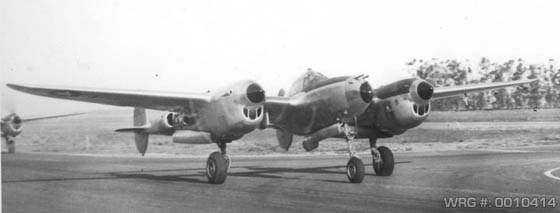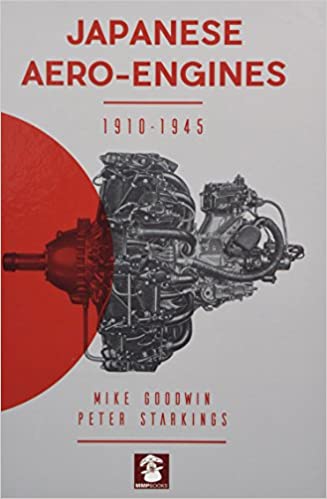Design & Development
The U.S. Navy purchased the first V-1710s, the B model (the only V-1710 that did not have a gear-driven supercharger) in 1931 and installed them on the airships Akron and Macon. The U.S. Army Air Corps purchased its first V-1710 in December 1932. The Great Depression slowed development, and it was not until December 14, 1936 that the engine next flew in the Consolidated XA-11A testbed. The V-1710-C6 successfully completed the Army 150 hour Type Test on April 23, 1937 at 1,000 hp (750 kW), the first engine of any type to do so. The engine was then offered to aircraft manufacturers where it powered the Curtiss X/YP-37. All entrants in the new pursuit competition were designed around it, powering the Lockheed P-38, Bell P-39 and Curtiss P-40. When war materiel procurement agents from England asked North American Aviation to build the P-40 under license, NAA instead proposed their own improved aircraft design, using the V-1710 in their P-51A Mustang.
Technical description
The V-1710 has 12 cylinders with a bore and stroke of 5.5 by 6 inches (140 by 150 mm) in 60° V-format, aggregating to 1,710.6 cu in (28.032 L) total displacement, with a compression ratio of 6.65:1.
The engine design benefited from the General Motors philosophy to build-in production and installation versatility. The engine was constructed around a basic power section from which different installation requirements could be met by fitting the appropriate Accessories Section at the rear and a tailored reduction gear for power output at the front. This approach allowed easy changes of the supercharger(s) and supercharger drive-gear ratio. That gave different critical altitude ratings ranging from 8,000 to 26,000 feet (2,400 to 7,900 m). It allowed a variety of propeller drives and also remote placement of the reduction gear.
The P-39, P-63, and XB-42 installations used V-1710-E series engines that exchanged the integral reduction gear for an extension shaft that drove a remotely located reduction gear and propeller. Aircraft such as the P-38, P-40, P-51A, and P-82 used close-coupled propeller reduction gears, a feature of the V-1710-F series.
Another feature of the V-1710 design was its ability to turn the output shaft either clockwise or counter-clockwise by assembling the engine with the crankshaft turned end-for-end, by installing an idler gear in the drive train to the supercharger and accessories and by installing a starter turning the proper direction. There was no need to re-arrange the ignition wiring, firing order, or the oil and Glycol circuits to accommodate the direction of rotation.
The V-1710 has often been criticized for not having a "high-altitude" supercharger. The comparison is usually to the later, two-stage, versions of the Rolls-Royce Merlin built by Packard as the V-1650 and used in the P-51B Mustang and subsequent variants. The US Army had specified that the V-1710 was to be a single-stage supercharged engine and, if a higher altitude capability was desired, the aircraft could use their newly developed turbosupercharger as was featured in the P-37, P-38, and XP-39.
The benefits of a two-stage supercharger eventually became so clear that Allison did make some efforts in this direction. Allison attached an auxiliary supercharger in various configurations to the existing engine-mounted supercharger and carburetor. Early versions of these two-stage supercharger engines were used on the P-63. No intercooler, aftercooler, or backfire screen were incorporated into these two-stage V-1710 engines (except for the V-1710-119 used on the experimental P-51J, which had an aftercooler). The two-stage Merlin engines had all of these features, which were designed to prevent detonation from charge heating and backfire into the supercharger. The G-series V-1710s installed on the F-82 E/F/G models had only anti-detonation injection to deal with these problems, and not surprisingly had severe reliability and maintenance problems. In one record, it was stated that the F-82 required 33 hours of maintenance for one hour of flight.
Although the early V-1710 powered P-39, P-40 and P-51A airplanes were limited to combat operations at a maximum of about 15,000 feet (4,600 m) they were available in comparatively large numbers and were the mainstay of some Allied Air Forces in all but the European theater of war. The engines proved to be robust and little affected by machine-gun fire. In total, over 60 percent of the US Army Pursuit aircraft operated during WWII were powered by the V-1710.
Allison continuously improved the engine during the war. The initial rating of 1,000 hp (750 kW) was incrementally increased; the final V-1710-143/145(G6R/L) was rated for 2,300 hp (1,700 kW). By 1944, the War Emergency Power rating on the P-38L was 1,600 hp (1,200 kW).

P-38L Lightning of the 70th Fighter Squadron, Phillipine Islands, 1945.
[Source: Jack Cook Collection via the Warbird Information eXchange]
Improvements in manufacturing brought the cost to produce each engine from $25,000 down to $8,500 and allowed the installed lifetime of the engine to be increased from 300 hours to as much as 1,000 hours for the less stressed powerplants. Weight increases needed to accomplish this were minimal, with the result that all models were able to produce more than 1 hp/lb (1.6 kW/kg) at their takeoff rating.
Comparisons between Allison engine and the Rolls-Royce Merlin engine are inevitable. What can be said for the Allison is that it made more power at less boost with a longer time between overhauls and the part count was nearly half that of the Merlin engine which facilitated mass production greatly. The British-made Merlin engines were still reliant upon hand-crafted and fitted parts from skilled craftsmen, something which was corrected by the redesign and success of the Packard V-1650 license-produced version of it in the United States, built with American production-line techniques. There also was a high degree of commonality of parts throughout the series. The individual parts of the Allison series were produced to a high degree of standardization and reliability, using the best technology available at the time. Even after the War, racing Merlins used Allison connecting rods! Allison employed a modular design, so that it was capable of being mated t o many different styles of turbo-superchargers and various other accessories, although the variety of turbo-superchargers available for installation was limited due to the constraints of single-engine fighter design. Since it was produced in large numbers and was highly standardized, the engine has been used in many postwar racing designs. Its reliability and well-mannered operation allowed it to operate at high rpm for extended periods.
Following the war, North American built 250 P-82E/F for air defense roles into the early 1950s. This was the final military role for the V-1710.
[Source - Wikipedia]





